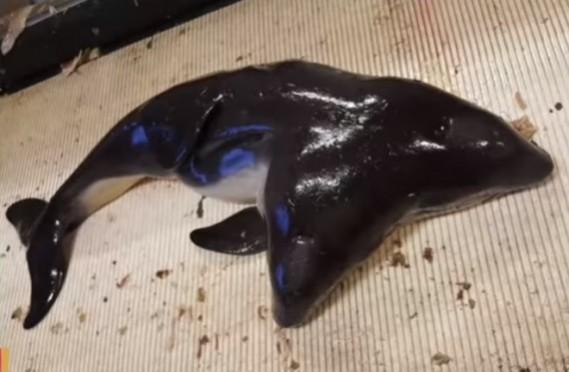
For the first time ever, a two-headed porpoise was accidentally caught by Dutch fishermen in the North Sea last month.
Also Read: Rosewell UFO Crash: More controversial revelations made! [VIDEO]
The fishermen were afraid of keeping their rare catch as they didn't know if it was legal to keep the marine creature. They took photos of the two-headed porpoise and then threw it back into the sea.
According to a study published in the journal of National History Museum Rotterdam, it is "extremely rare" to find conjoined twins in dolphins and whales. Even normal twinning in porpoises is said to be extraordinary as the womb of the mother is compact and lacks space for more than one offspring.
"Symmetrical conjoined twins such as the found porpoise are thought to be a result of two separate embryos fusing together or a zygote that only partially split," Science World Report quoted.
It was also revealed by National Geographic that the conjoined porpoise was a newborn male. Cases of other conjoined creatures such as reptiles, domestic animals and even humans have been observed in the past, but coming across a case like this in the wild is rare. So far just nine cases of two-headed
So far, just nine cases of two-headed cetaceans -- aquatic animals like of dolphins, whales and porpoises -- have been recorded by dependable sources. The case of this two-headed porpoise is the tenth case.
The decision of the fishermen to throw the rare porpoise back into the water was upsetting for researchers, as they couldn't assess the fish closely and there are no chances of finding it again. They are anyways examining the fish with the help of the available images.
Another detail revealed by the photos was that there were hairs on the top of the heads. Researchers concluded that the fish wouldn't have survived for too long as it still had its umbilical opening intact.
"They could have two brains that instructed one body to swim different ways, or their single heart could fail to pump enough blood," researchers explained as per Science World Report.

















